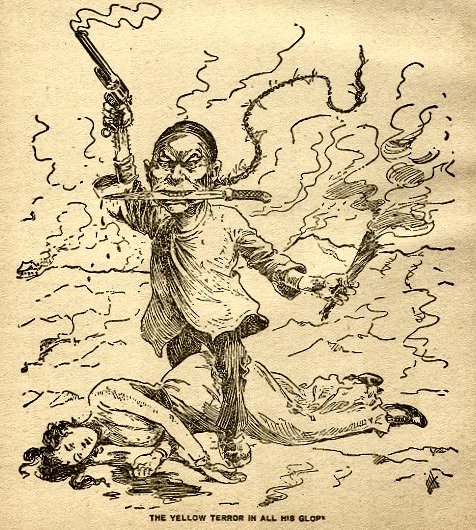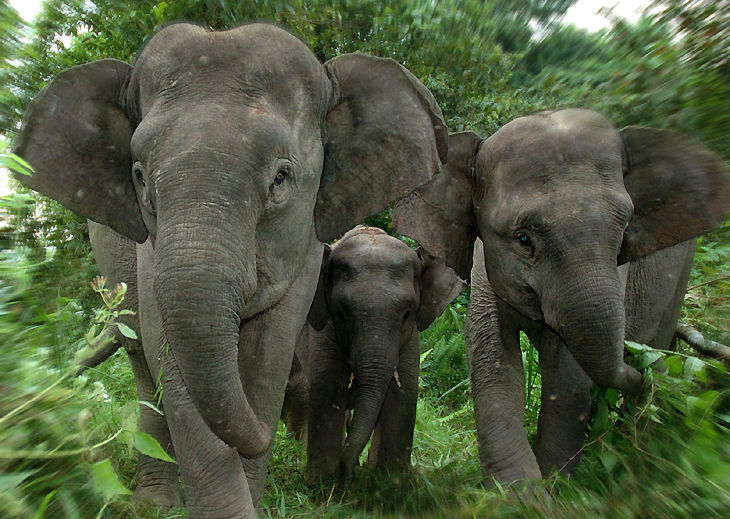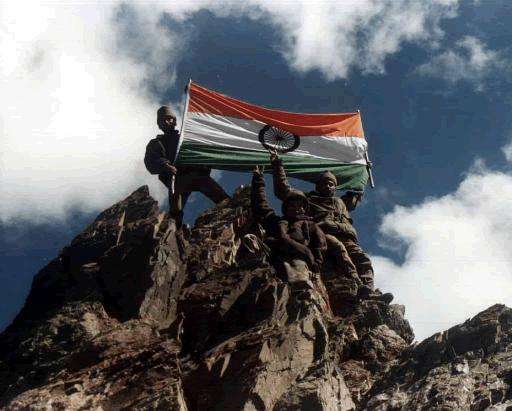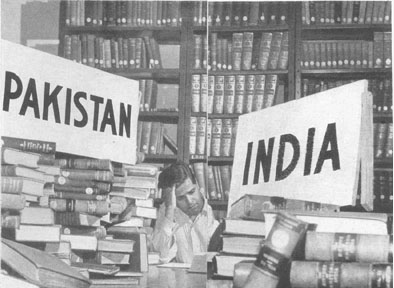When India
and Pakistan were born in 1947, many in the sub-continent hoped the cycle of
hatred which partition of the sub-continent had unleashed would like most conflicts, come to an end. That has as yet not happend, perhaps because of the nature of
the theory which gave birth to Pakistan.
What many fail to understand is Pakistan, India's twin
brother, was born as an anti-thesis of all that India stood for. India’s
leadership envisaged the nation would be a federal, multi-lingual, multi-racial,
secular state. The Pakistan theory envisioned just the opposite – a unitary
state where one religion and one language and left unsaid – one race - would
determine nationhood and citizenship.
Its founder,
the otherwise secular in his personal
life, Muhammad Ali Jinnah, tried to undo some of the damage that this theory
could wreak on the child he was giving birth to by trying to `secularise’ state
policy. In a remearkable speech to the Constituent Assembly
of Pakistan, Jinnah said “You are free; you are free to go to your temples, you
are free to go to your mosques or to any other place or worship in this State
… no distinction between one community and another, no
discrimination between one caste or creed and another. We are starting with
this fundamental principle that we are all citizens and equal citizens of one
State.”
However, his death soon after
Pakistan’s creation put an end to that start.
The Pakistan theory’s
raison-d’etre was in negating all that India stood for. If Muslims and Hindus
could get along together, then Pakistan’s logic was lost. To undo the enmeshed
twinning of the two faiths’ adherents, Muslim League and its ideological followers, worked overtime, helped, many allege by Britain, the fading power which wished to continue its rule through a policy of `Divide et Impera'.
Through the
1930s and ‘40s, in Bengal and Bihar, Muslim women were asked to replace wearing
red bordered saris with green bordered ones, in Western and Northern India to replace
saris with salwarkameez. Bindis were frowned upon. Muslim boys were asked to
stop wearing dhotis and opt for Payjamas. (How these were deemed more `Pakistani' is
still a mystery). The idea was to create separate identities.
In 1947 it
seemed to work. Identity politics reinforced by communal violence saw the
country partitioned.Three fifth’s of the sub-continent’s Muslims lived in the
Punjab, Sindh and in the North West Frontier Province or in East Bengal. They
opted out of India to follow Jinnah into Pakistan. Those who said otherwise,
such as Badshah Khan or the Baloch of Kalat, saw their voice and reasoning
drowned by the voluble cries for Pakistan.
Millions
more caught on the `wrong’ side of the border, followed the paths of the greatest human migration in history. Post-partition, non-Muslims
were less than 5 per cent in West Pakistan and about 29 per cent in East.Through
the 1950s and 1960s, with increasing marginalisation and occasional progroms,
minorities kept migrating from there to India, bringing down their numbers to
about 14 per cent in East Pakistan by late 1960s and two and a half per cent in
West Pakistan.
Indian Muslims : Indians first
 Yet a third
of the sub-continent’s Muslims chose to stay on in secular India in 1947. Some
because that was where their lands and businesses were. Some like that of the family of
actor Shah Rukh Khan or that of Nawab of Pataudi, because they believed in
the Congress and its vision of a secular state. Except for a few stray cases of
rich landowners or business tycoons who migrated to save taxes in the 1950s and 1960s, none migrated
to the neighbouring `Land of the Pure (Pak-i-stan).’ From 9.9 per cent of India’s
total population in 1951, this community’s percentage of the total population
went up to 11 per cent by 1981 and 14 per cent by 2011.
Yet a third
of the sub-continent’s Muslims chose to stay on in secular India in 1947. Some
because that was where their lands and businesses were. Some like that of the family of
actor Shah Rukh Khan or that of Nawab of Pataudi, because they believed in
the Congress and its vision of a secular state. Except for a few stray cases of
rich landowners or business tycoons who migrated to save taxes in the 1950s and 1960s, none migrated
to the neighbouring `Land of the Pure (Pak-i-stan).’ From 9.9 per cent of India’s
total population in 1951, this community’s percentage of the total population
went up to 11 per cent by 1981 and 14 per cent by 2011.
Pakistan after
coming into being,had started defining who was a Muslim. Ahmedias and Bohras
lost out early in this search for the `Pure’. Later Shias were discomfited by
questions of how true their Muslim identity was and in recent years subjected
to ethnic cleansing attacks.
Ethnicity
was also a moot question. Pakistan
defined itself as nation which inherited India’s Arab and Central Asian
heritage. This, seemed to suggest that Pakistanis were descendants of the `Golden
hordes’, the Arab, Turkic and Moghul armies which came to India in medieval
times.
At best this was but a scatter-brain theory which chose to ignore that most Indian Muslims
were descendants of converts to the new, attractive monotheistic
religion, which gave many Indians an alternate to the decadent,
caste-ridden form of Hinduism which flourished when Islam entered India. However, this` hypothesis' at one stroke, immediately
marginalised the already poor, dark complexioned émigré’ from India and the Bengali Muslims of East Pakistan.
The search
for `Purity’ threw up an oligarchical leadership in the neighbouring state – a
coterie of Punjabi-Pathan and high born émigré’ from North India feudals who
controlled the top rungs of the army, bureaucracy, industry and politics in
that country.
Challenges to the Idea of Pakistan
Racial discrimination,
insistence on one language, Urdu, economic colonisation of the East by the
West, lack of democratic outlets to grievances, led to Pakistan breaking up and
giving birth to Bangladesh. Ethnic identity politics still remains a bitter
divide in Pakistan, with poor émigré’ Bihari Muslims living in Karachi slums often
erupting in violence against real or perceived discrimination.
The challenge whch the formation of Bangladesh gave to the theory that Pakistan, was the sole refuge for Muslims of the sub-continent, who
in the eyes of Pakistan's founders were a separate people set apart from their
neighbours, was met by a stricter interpretation of the `Pak (Pure)’ theory.
Children were taught through official textbooks from the 1970s onwards, that
Hindus were their enemies and that history started with the Arab invasion of Sindh, which saved
people from a despotic, harsh Hindu rule. Earlier eras and civilisations were simply
forgotten.
Non-Muslims
and Muslims, not deemed to be Muslim enough, were further marginalised and laws
and regulations changed to ban liquor, cabarets, Hindi movies, shared festivals, in short
anything which was shared fun.
If India was
successful as a secular nation, then Pakistan’s logic was lost. Hence
Pakistan’s need to challenge the accession of Kashmir, India’s only Muslim
majority state. Two wars by Pakistani armed forces could not detach the state.
Rather, the state through repeated democratic elections seemed to renew its
faith in a life with India. In the late 1980s, Pakistan therefore started
fomenting trouble in Kashmir valley. The
result was not really in favour of Pakistan, but it was against Indian unity.
A secessionist, Islamist, movement took roots
in the valley, partly because of Pakistan’s proxy war, partly because of
genuine long standing discontent arising from a series of corrupt state
governments, economic deprivations, Central neglect, etc.. A challenge, the
Indian state has tried to meet partly by using military force and partly by a mix of talks with separatists and
steps to better the economy of the state.
However Kashmir
represents just 10 million of India’s more than 160 million Muslims and Kashmiris seem to believe more in their Kashmiriat than their religious identity.
Radicalising the larger body of Indian muslims and using this mass as a bulwark against India was
therefore always an even more attractive option for those who wished to reinforce the
two-nation theory.
Unfortunately
for them, this proved to be a difficult option. Most Indian Muslims thought of
themselves as Indians first and Muslims afterwards and certainly had little or
no sympathies for Pakistan. The valour of Indian Muslim soldiers in 1948, 1965,
1971 and more recently in Siachen and Kargil are testimony to that as also the
immense contribution of that community to India’s administration, politics,
theatre, the arts, literature, academia and sciences.
More recent
attempts of using morphed images of Thai, Tibetan and Chinese to represent
Rohingya and Assamese Muslim riot victims to inflame passions through India,
too seems to have fallen flat on its face.
The unity of
multi-racial and multi-ethic India was also a challenge to Pakistan which was
trying to create a single Pakistani Muslim identity with links to an Arabic-Central Asian heritage. Hence, Pakistan’s support
to rebel groups from the North East. First, when Pakistan was a united entity,
through camps in Chittagong Hills and later when a `Pak-friendly’ military
government was established in Bangladesh through a coup, by using other border
safe havens. Unfortunately, for Pakistan and luckily for India, Bangladesh in
the 21st century realised the dangers of allowing these groups which
brought drug peddling, money laundering and arms running into that state, a free run. A clampdown by Bangla authorities helped save that nation from a growing threat to its own safety and security, not to mention its relations with its
single largest neighbour.
Pakistan - Which Road Will It Take
As India
becomes economically more successful and Pakistan sinks into troubled times
with Baluchistan and Gilgit demanding autonomy at the least and independence at
the best, Sindh turning more restive and Hill Pathan tribes dreaming of a
greater Pashtunistan with their Afghan cousins, the idea of Pakistan will come
under greater challenge. Desperate to reinforce its unity, that nation may
well then continue on the path it chose earlier – challenging India’s unity and
secular credentials to prove that the opposite of Pakistan does not mean
success. India has her faultlines and these could well be exploited. Chosing
this path will probably be concurrent with greater Islamisation or in effect
even eventual Talibanisation of the Pakistan state.
If Pakistan,
choses this path, then it could mean more terror strikes at Indian targets,
psy-warfare of the kind witnessed in the recent sending of bulk SMSs to people
of North Eastern descent, threatening them with attacks by Muslim groups. The radicalisation of that nation will also
mean reinforcement of the feeling of victimhood in Pakistan, greater
intolerance towards other religions and people and greater support for ideas of
crusade or Jihad against not only India but also those perceived as Christian
nations.
However,
there is a different path that nation may chose. One of cooperation. It may
chose to befriend its twin brother to bring not only peace, but also prosperity
within its borders. One would hope it would chose that path. But, yes, that
choice will in time kill the idea of Pakistan as an anti-thesis to India. A new
identity will then have to be forged for that nation or else it would, in time, wither.
American
strategic affairs writer Robert Kaplan has pointed out that down the ages,
nebulous border states have often existed in the sub-continent, encompassing
border races and tribes, even as India proper has prospered as a single entity.
Perhaps Pakistan would like redefine itself as such a confederacy. The path it
choses in the next half a decade will be crucial for its existence and
well-being, indeed the well-being of the whole sub-continent.
Once the
choice is clear, India and other powers interested in Pakistan would react. If
Pakistan choses overt or covert confrontation as well as increasing
Talibanisation, India will have to rethink its peace propositions. These have
been made on the calculation that it is better to have one united neighbour,
with whom peace can be forged at some date on its western border rather than a
Balkanised, unstable region.
At some
stage, India, and other powers such as the US and Russia who face threats from
this rising tide of Talibanisation, will weigh the pros and cons of such a
stance and decide whether to risk a Talibanised Pakistan or to support the
process of Pakistan unravelling itself, risking the aftermath as a lesser evil.


















